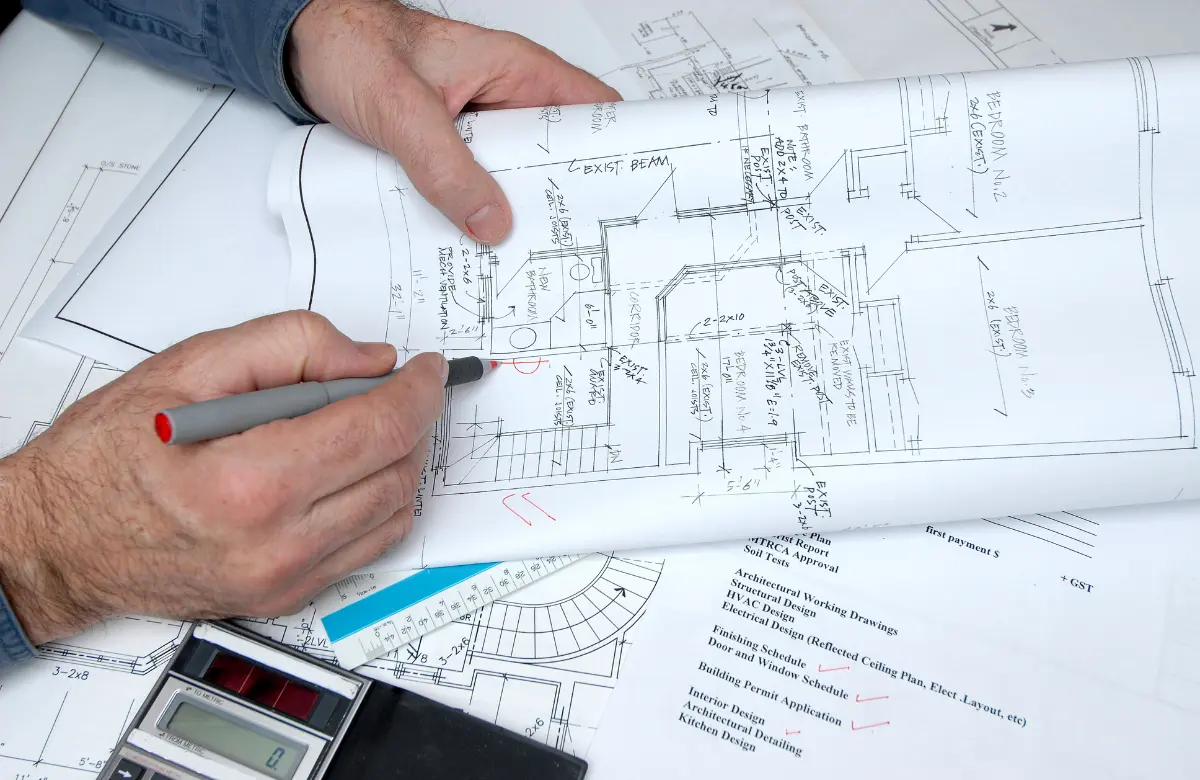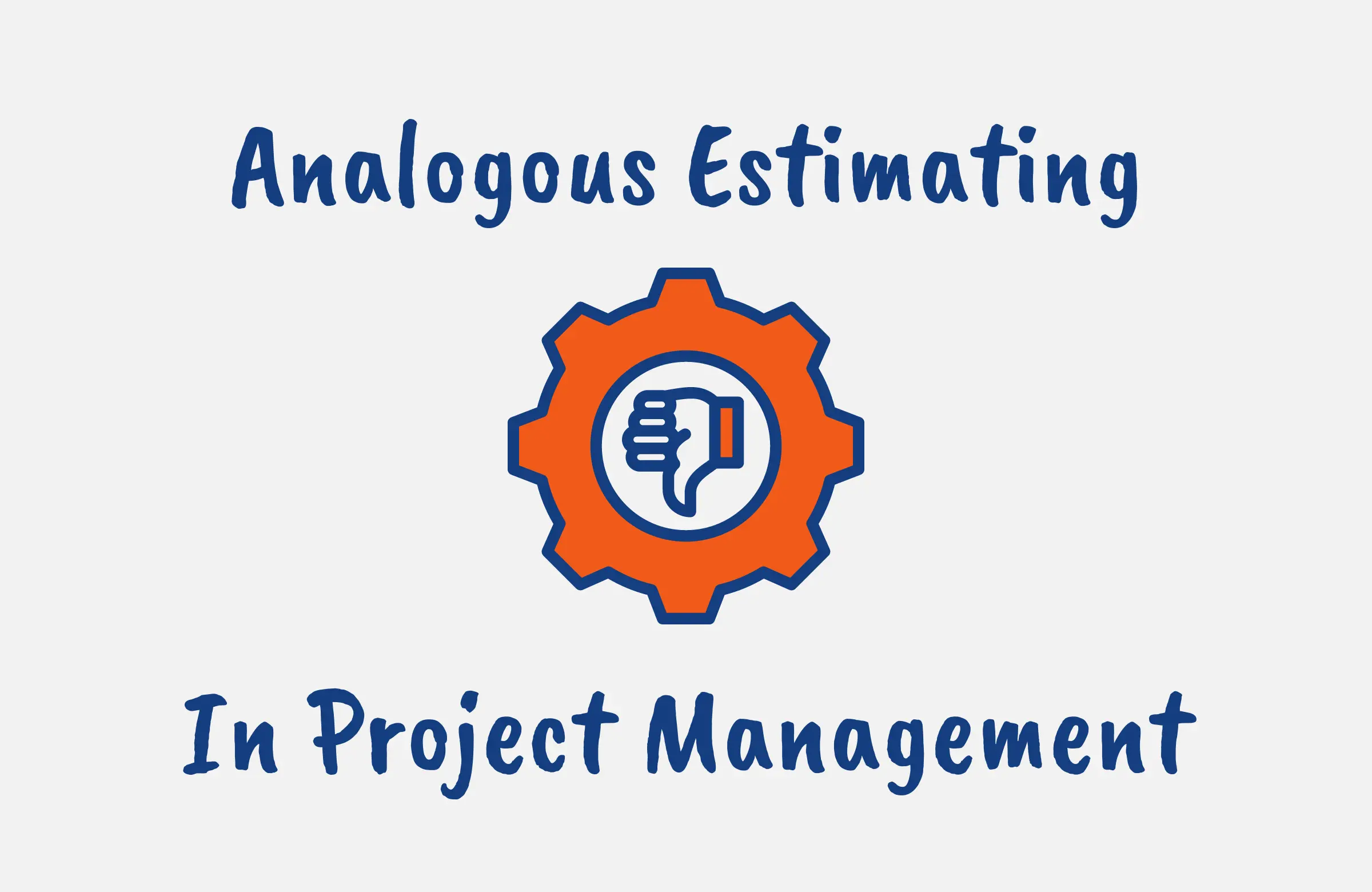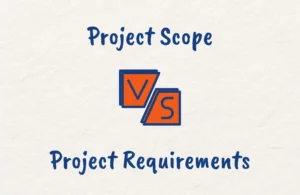As a project manager, you’ll often need to create estimates for activity durations, cost estimate estimates, and resource estimates to come up with a project budget, schedule, and resource requirements with limited upfront information.
Rather than reinventing the wheel by starting from scratch, you can leverage lessons learned and historical data from similar past projects to come up with quick, reasonably accurate predictions through a method called analogous estimating.
In this post, we’ll explore what analogous estimation is, when and how to use it, and how it compares to other estimating techniques. You’ll see why this top-down estimation approach can be an invaluable tool when precise data is lacking.
If you are preparing for the PMP exam, project estimating techniques is one area you need to be conversant with and I’ll be dropping analogous estimating PMP exam tips to ensure you are ready for any questions there.
What is Analogous Estimating in Project Management?
Analogous estimating is a forecasting technique used to estimate project parameters like cost, budget, duration, and resources by leveraging data from previous, similar projects.
It relies on expert judgment to determine how alike the current and historical projects are.
Analogous Estimating Definition
The PMBOK Guide defines analogous estimating as using the actual values from previous, comparable activities as the basis for estimating the same parameter or measurement for a current project.
In this estimating technique, rather than using a detailed, bottom-up estimating approach, analogous estimating takes a top-down view where the overall project is estimated first, and then broken down into individual tasks.
This technique requires minimal project specifics upfront since it depends on broad similarities versus detailed analyses.
Analogous Estimating Example
Let’s take an example using a scenario where your team must build a 5-page website for a new client where you don’t have detailed requirements yet, but need to estimate the budget.
Having built a 10-page site last year for a client in the same industry that cost $15,000 and took 6 weeks, you can use that data as a baseline for analogously estimating.
While not an exact match, through interpolation you can estimate that this new 5-page site will cost around $10,000 and take 4 weeks.
While the estimate may not be precise, it provides a ballpark to convey to stakeholders until you gather more detailed project information.
It can quickly produce a top-level forecast when project particulars are limited. Just be sure the historical reference projects match reasonably well.

Types of Analogous Estimating Techniques
There are a few different types of analogous estimates you can employ on your projects.
Choosing the right analogous technique depends on the available historical data and required accuracy.
1. Single Point Estimating
This technique provides a single number estimate, such as $50,000 for the overall project cost by leveraging a similar historical project’s metrics directly.
You simply take one absolute value from the past data and apply it to the current project.
2. Ratio Estimating
With ratio estimating, you adjust data from a previous project by a certain factor to come up with a new estimate.
For example, you may determine your project will take 125% as long as the reference project. This accounts for differences in project scope or other variables.
3. Three-Point Estimating
Also called PERT estimating, this technique derives an estimate from three data points:
- Optimistic estimate – best-case scenario
- Most likely estimate – your expected outcome
- Pessimistic estimate – worst-case scenario
You calculate the final figure using a weighted average of the three amounts. Having a range brackets your projection between upper and lower bounds.
4. Range Estimating
Similar to three-point estimating, this provides a range of possible values indicating the variability and uncertainty of the estimate.
You present the minimum, maximum, and most likely figures based on data from past projects.
How to Use Analogous Estimating in Project Management
To use the analogous estimating technique for your project, here are some steps to follow:
1. Identify Similar Historical Projects
Look for completed projects from your organization’s history that align with your current effort in terms of budget, timeline, technologies used, scope, and deliverables. These become your baseline data source.
2. Gather Data from Past Projects
For the analogous projects you identified, pull key data points like overall cost, schedule duration, resources required, and any other metrics needed for estimating your current project.
3. Select the Analogous Technique
Determine which technique (single point, ratio, three-point, or range estimating) fits best based on the available historical data. Choose one that aligns with the data present.
4. Consult Subject Matter Experts
Work with team members familiar with the historical and current projects to provide input on accurate analogy factors and assumptions to make. Leverage their expertise.
5. Make Adjustments as Needed
Adjust the historical estimates to account for known differences between the past and current projects, like inflation or technology changes impacting costs.
6. Derive Preliminary Estimates
Use the historical figures, adjusted as needed, to provide initial estimates for budget, timeline, resources required, etc. Document your methodology and assumptions.
7. Refine as Details Emerge
Revisit your analogous estimates and refine them as you gather more detailed requirements. Transition to more precise bottom-up estimating methods later when possible.

When to Use Analogous Estimating in Project Management
The analogous estimating technique works best in these scenarios:
1. Early Project Phase
A good time to use analogous estimating is when you need quick high-level estimates at the start of a project before detailed requirements are available.
2. Lack of Robust Project Data
Apply analogous estimating when you lack sufficient historical data on the current project type but have completed similar projects in the past.
3. Top-Down Estimating
You can leverage analogous estimating for module or system-level estimating when task-level accuracy isn’t required yet.
4. Need Very Quick Estimates
Another scenario to use analogous estimating is when you need a fast estimate and don’t have time for complex statistical forecasting techniques.
5. Budgetary Planning
Analogous estimates support rough order of magnitude estimates for budgetary planning and feasibility analysis.
6. Baseline for Refinement
An analogous estimate provides an initial framework that can be refined later with more precise techniques as project details emerge.

Analogous Estimating Pros and Cons
Like every project management estimating technique, analogous estimating offers several benefits but similarly has drawbacks.
As the project manager, you must weigh the pros and cons to determine if analogous estimating is the right technique for your project’s current phase and objectives.
Some of the advantages of analogous estimating include:
- It provides quick high-level estimates when detailed data is lacking
- It leverages previous organizational experience
- It requires minimal inputs and is easy to apply
- It is useful for initial project planning and feasibility analysis
- It allows top-down system-level estimating
- It is a useful technique when rapid estimation is needed
The disadvantages of the analogous estimating technique include:
- It is heavily dependent on expert judgment to assess the similarity between your current project and previous projects
- The historical data may not align well with the current project
- It is hard to quantify how adjustments were calculated
- It ignores detailed task-level planning
- Its accuracy is limited due to its top-down nature
- It can overlook complexities if relying on poor analogy

Parametric Estimating vs Analogous Estimating
Parametric and analogous estimating are town estimating techniques that leverage historical data for project forecasts. However, they take different approaches:
1. Data Requirements
Parametric estimating requires large data sets of historical project metrics at the activity level to calculate valid statistical models.
In contrast, analogous estimating only leverages high-level summary data like budget, timeline, and high-level scope from a few comparable projects.
2. Accuracy
Parametric estimating develops detailed statistical models at the work package level to derive quantitative estimates leading to greater precision.
Analogous estimating on the other hand relies more on expert judgment to determine similarities between current and historical projects. Less data modeling is done here which leads to lower accuracy.
3. Project Scope
Parametric estimating quantitatively models the bottom-up effort and costs for all work packages to build up an estimate.
While analogous estimating takes a top-down approach focused on overall project effort and cost rather than detailed activities.
4. Complexity
Building parametric models requires statistical skills. Analysts must identify key cost drivers and variables to model.
Analogous estimating is simply to apply as it relies more on project management expertise to judge similarities between projects at a high level.
5. Speed
Developing robust parametric models takes significant upfront time before they can be applied to estimate new projects.
Analogous estimating on the other hand provides a quicker method to get ballpark estimates based on historical analogues.

Analogous Estimating PMP Tips
If you are preparing for your PMP exam, here are some key tips to handle questions involving analogous estimating when you encounter them:
1. Understand Analogous Estimating
Analogous estimating is also known as top-down estimating and is often used for quick estimation when detailed data is not available.
2. Know The ITTOs
The inputs, tools, techniques, and outputs (ITTOs) are another thing you should have an understanding of.
Inputs: In the early project phases, the main inputs for analogous estimating include historical data from similar projects and expert judgment. Keep in mind that analogous estimating relies heavily on relevant information from past projects.
Tools and Techniques: The main techniques in analogous estimating are the creation of single-point estimates, ratio estimates, and range estimates. You might also use PERT analysis for further refinement. The key tool here is the expert’s knowledge and experience.
Outputs: The outputs of analogous estimating are the estimated project cost and project duration. These are typically broad estimates given the limited information available early in the project.
3. Advantages and Disadvantages
Analogous estimating is quick and cost-effective but less accurate than other methods like parametric estimating.
Understanding these trade-offs is critical for the PMP exam.
4. Practice Questions
Familiarize yourself with how questions about analogous estimating and its ITTOs are presented in the PMP exam.
Practice questions will help you recognize and correctly respond to these on the actual test.
Conclusion
Analogous estimating provides an expedient method for forecasting budgets, timelines, and required resources by leveraging your organization’s historical project data.
While not overly precise, it serves as a valuable rapid technique when detailed estimating is impractical.
You can utilize analogous methods judiciously in the right situations, and supplement with more rigorous estimating approaches later.





